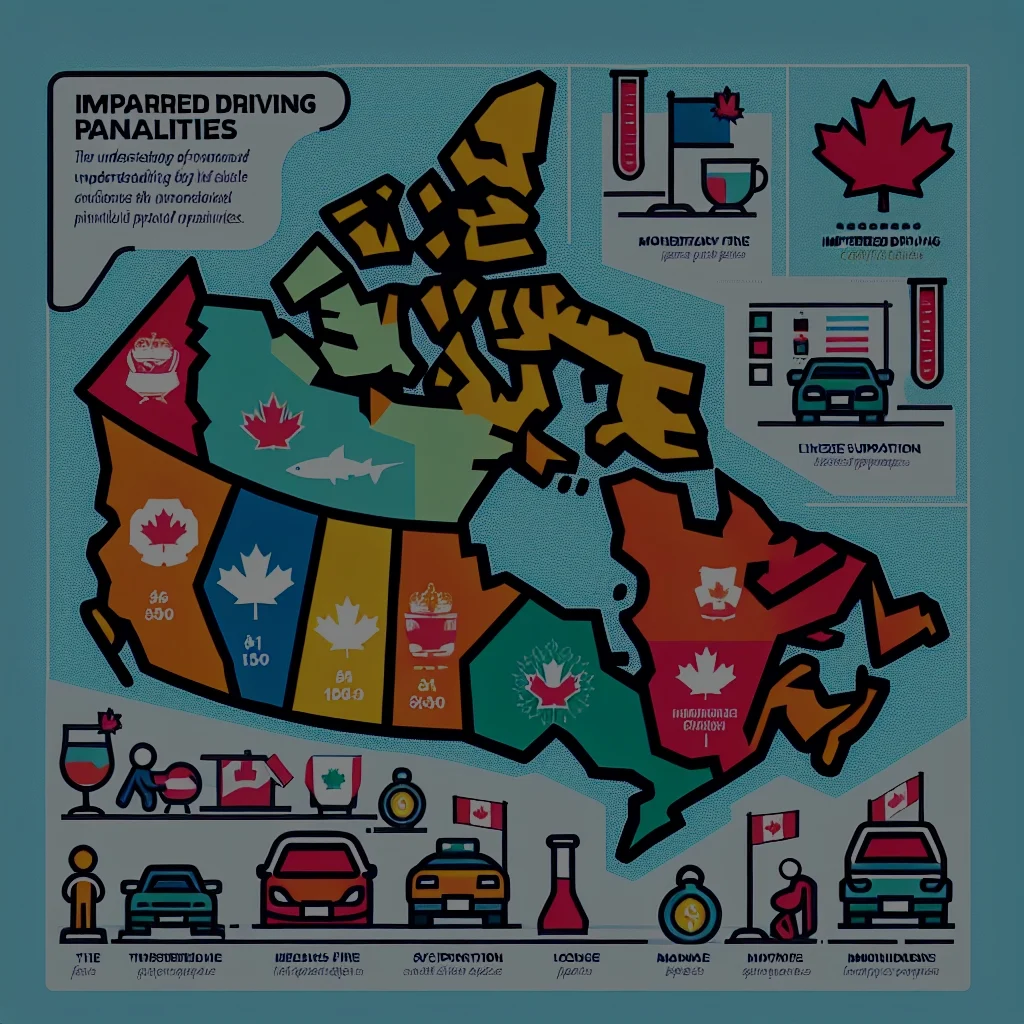Impaired driving remains a significant issue across Canada, with serious implications for public safety and individual lives. Understanding the legal landscape surrounding impaired driving is crucial for all Canadians, as it encompasses a variety of laws, penalties, and rehabilitation processes. This article aims to provide a comprehensive overview of impaired driving laws, the consequences faced by offenders, and the variations in enforcement practices across provinces. Additionally, we will explore the rehabilitation process for those charged with impaired driving offenses, emphasizing the importance of addressing the underlying issues that contribute to such behavior.
The Legal Landscape: Impaired Driving Laws in Canada
In Canada, impaired driving laws are primarily governed by the Criminal Code, which delineates clear prohibitions against operating a vehicle while under the influence of alcohol or drugs. The law categorizes impaired driving into three main offenses: driving while impaired by alcohol or drugs, having a blood alcohol concentration (BAC) over the legal limit of 0.08%, and refusing to provide a breath sample when requested by law enforcement. These offenses are taken seriously, reflecting the country’s commitment to enhancing public safety on the roads.
To tackle impaired driving effectively, Canadian law enforcement utilizes various tools, including roadside sobriety tests and breathalyzer devices. Police officers are trained to recognize signs of impairment and are authorized to conduct random checks, especially during high-risk periods such as holiday seasons. The legal framework also includes provisions for administrative penalties, which can result in immediate license suspensions and vehicle impoundments, often before a court trial even takes place. Such proactive measures aim to deter individuals from driving under the influence and to protect the community at large.
Furthermore, the federal government has introduced stricter penalties over the years, reflecting public concern and advocacy for safer roads. Recent legislative changes, such as Bill C-46, have increased consequences for impaired drivers, including longer minimum driving prohibitions, mandatory alcohol education programs, and enhanced penalties for repeat offenders. These ongoing legal adaptations highlight the dynamic nature of impaired driving laws in Canada, continually evolving in response to societal needs and the imperative to reduce road-related injuries and fatalities.
Consequences of Impaired Driving: An Overview of Penalties
The consequences of impaired driving can be dire, encompassing a range of legal, financial, and personal repercussions. Offenders face criminal charges that can lead to hefty fines, imprisonment, and a criminal record. The severity of the penalties often depends on the specific circumstances of the offense, such as whether it is a first or repeat offense, the level of impairment, and if any injuries or fatalities occurred as a result of the impaired driving. For instance, first-time offenders may face lighter penalties, while repeat offenders or those involved in serious accidents face significantly harsher consequences.
In addition to criminal penalties, impaired drivers may also encounter administrative consequences, including immediate license suspensions and vehicle impoundments that can last from a few weeks to several months, depending on the province. These administrative penalties can create significant disruptions in daily life, affecting employment and personal responsibilities. Moreover, offenders are often required to participate in education and treatment programs designed to address substance abuse, which can also incur additional costs and time commitments.
The financial impact of impaired driving extends beyond immediate fines and legal fees. Offenders may experience increased insurance premiums or difficulties obtaining insurance altogether, as many insurance companies view impaired driving as a serious risk factor. This can lead to long-term financial strain, particularly for individuals who rely on their vehicles for work or family obligations. Overall, the consequences of impaired driving are multifaceted, affecting not just the offender, but also their families and the wider community.
Provincial Variations: Understanding Local Enforcement Practices
While impaired driving laws are standardized at the federal level, enforcement practices and penalties can vary significantly across provinces and territories in Canada. Each region has the authority to implement its own administrative measures and enforcement strategies to combat impaired driving effectively. For example, some provinces have introduced rigorous roadside screening measures, allowing police to conduct random checks and breathalyzer tests with minimal cause, while others might employ different approaches, emphasizing education and community engagement.
In British Columbia, the Immediate Roadside Prohibition (IRP) program exemplifies a strict administrative approach to impaired driving. Under this program, drivers can face immediate license suspensions and vehicle impoundments for impaired driving, even before formal charges are laid. In contrast, provinces like Ontario have developed a more comprehensive system that combines both administrative and educational measures to address impaired driving offenses, highlighting the importance of prevention as well as consequence.
The variation in enforcement practices can also reflect cultural attitudes towards impaired driving, as well as local resources and law enforcement priorities. For instance, rural areas may face unique challenges in enforcement, given the vast distances between communities and limited access to public transportation, which can influence the prevalence of impaired driving. Understanding these provincial differences is essential for individuals to grasp the legal landscape surrounding impaired driving in their specific region, ensuring compliance with local laws and awareness of potential risks.
Navigating the Rehabilitation Process After Impaired Charges
After being charged with impaired driving, individuals often face a complex rehabilitation process aimed at addressing the root causes of their behavior and preventing future offenses. The first step typically involves attending mandatory education programs that focus on the dangers of impaired driving, substance abuse awareness, and responsible decision-making. These programs are designed not only to fulfill legal requirements but also to foster personal reflection and accountability among offenders.
In many provinces, participation in rehabilitation programs may be linked to the reinstatement of driving privileges. Offenders are encouraged to engage in treatment options such as counseling or support groups, particularly for substance abuse issues. These programs can provide valuable resources and support systems, empowering individuals to understand their addiction and develop coping strategies. The integration of mental health services is also increasingly recognized as a crucial component of effective rehabilitation.
Moreover, the rehabilitation process often involves ongoing monitoring and support, which can include follow-up sessions or check-ins with designated professionals. By creating a structured environment with clear expectations, offenders can work towards successful reintegration into society while reducing the risk of reoffending. Ultimately, a comprehensive and supportive rehabilitation process is essential not only for the individual’s recovery but also for fostering safer communities across Canada.
In conclusion, understanding impaired driving penalties in Canada is vital for promoting road safety and accountability. The legal landscape is complex, with federal and provincial laws governing the consequences of impaired driving, which can vary significantly across jurisdictions. As Canada continues to prioritize the reduction of impaired driving incidents, the emphasis on rehabilitation and education will play an increasingly critical role in helping offenders reintegrate into society. By addressing the underlying issues leading to impaired driving, the nation can work towards a future where roads are safer for everyone, reflecting a collective commitment to public health and safety.
Navigating the Appeal Process: A Guide for Canadian CourtsUnderstanding Your Rights When Arrested in CanadaUnderstanding Your Rights: The Canadian Human Rights Act ExplainedRelevant LinkRelevant LinkRelevant LinkNavigating the Appeal Process: A Guide for Canadian CourtsUnderstanding Your Rights When Arrested in CanadaUnderstanding Your Rights: The Canadian Human Rights Act ExplainedRelevant LinkRelevant LinkRelevant Link



